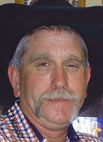
On the to-do list of Gary and Melissa Holland of Gentry, Ark., is checking records to determine if their farm is already a century farm. Gary’s grandfather bought the house and 20 acres around 100 years ago. The house has been home to five generations of Hollands and is currently the residence of Gary’s son and family with Gary living in his own home on the original plot.
Gary’s father, Wilbur, kept a daily diary for over 40 years, which is like a sepia-toned snapshot of farming history. Gary said “I didn’t have to remember anything because my dad remembered it for me and used to get after me for that.” One thing Gary does remember is following his father around while baling when he was 5. Gary saw what he thought were flies in the field and dug them up only to be stung over and over by angry bumblebees. Gary said, “The bees and the rod hurt about the same because my dad didn’t believe in sparing the rod.” When Gary was about 8 he rode a saddled goat to bring the cows home to milk after school – little did he know he had his first job.
The Holland farm has been a dairy and sold milk continuously since the 1930s. According to Wilbur’s diary, the Holland ranch was first supplied with electricity on August 26, 1939, at 1 p.m. Wilbur explained, “It was so nice to have a light bulb to read by.”
In the old days milking on the farm was done by hand at 4 a.m., and 4 p.m., milking 20 to 30 cows with the milk set outside on the road where a truck came by and picked it up. Wilbur bought their first milking machine in the early ‘50s. The oldest son used it while Wilbur and the middle son still milked by hand since Gary was too young to help. A decade later Wilbur turned an old house into an elevated, two stall milking barn and was the first in the area to have a bulk tank. He took ribbing from the neighbors who said it would never last. Obviously, they were wrong, especially after the purchase of an electric water cooler.
In the 1980s, Gary bought 124 acres from his father and now leases an additional 100 acres, which supports 100 milking cows with some out to pasture to dry. Melissa and Gary married in 2003, which brought major changes to the operation. Until then Gary bought replacement heifers, but when they married, Melissa wanted to raise their calves. Their first bulls were a Jersey and Red Holstein using the Jersey with Brown Swiss heifers so birthing would be easier. However, Gary found the calves to be too small and not as hardy and Jersey bull temperamental. Melissa promptly issued an ultimatum, “It’s me or the Jersey bull.” The bull went.
Water usage on the farm developed through time. In addition to ponds for cattle, one well was dug in 1971 when Gary’s father raised chickens. Then, in 1980, Gary dug another well which had water 8 feet from the top. When the airport was built, the water flow was disrupted and the well all but dried up. Then, in the 1990s, Gary decided they really needed another well so they dug 1264’ to sea level to open up a new vein. Gary said, “When you go to the Ruby Do (a colloquial term for sea level), you have plenty of water and we were fortunate we didn’t hit sulfur water.
An important feature of the Holland Dairy Farm is the use of leftover vegetables from a nearby canning plant, which he grinds with straw, brewers grain and a pre-mix supplement to provide feed for the cattle. It is a delicate, time-consuming process because an unbalanced mixture can easily make the cows ill and the exact vegetables used change daily as well as seasonally. Gary said, “Three things have kept us going through this time of high payments and feed costs. One is using the vegetables for feed and the others are constant help from my boys and God. I am very grateful for all three.” The Holland blended family includes daughters Heather, Lew, and Lashelle and sons Gary, Gene, Nelson and Cody.







